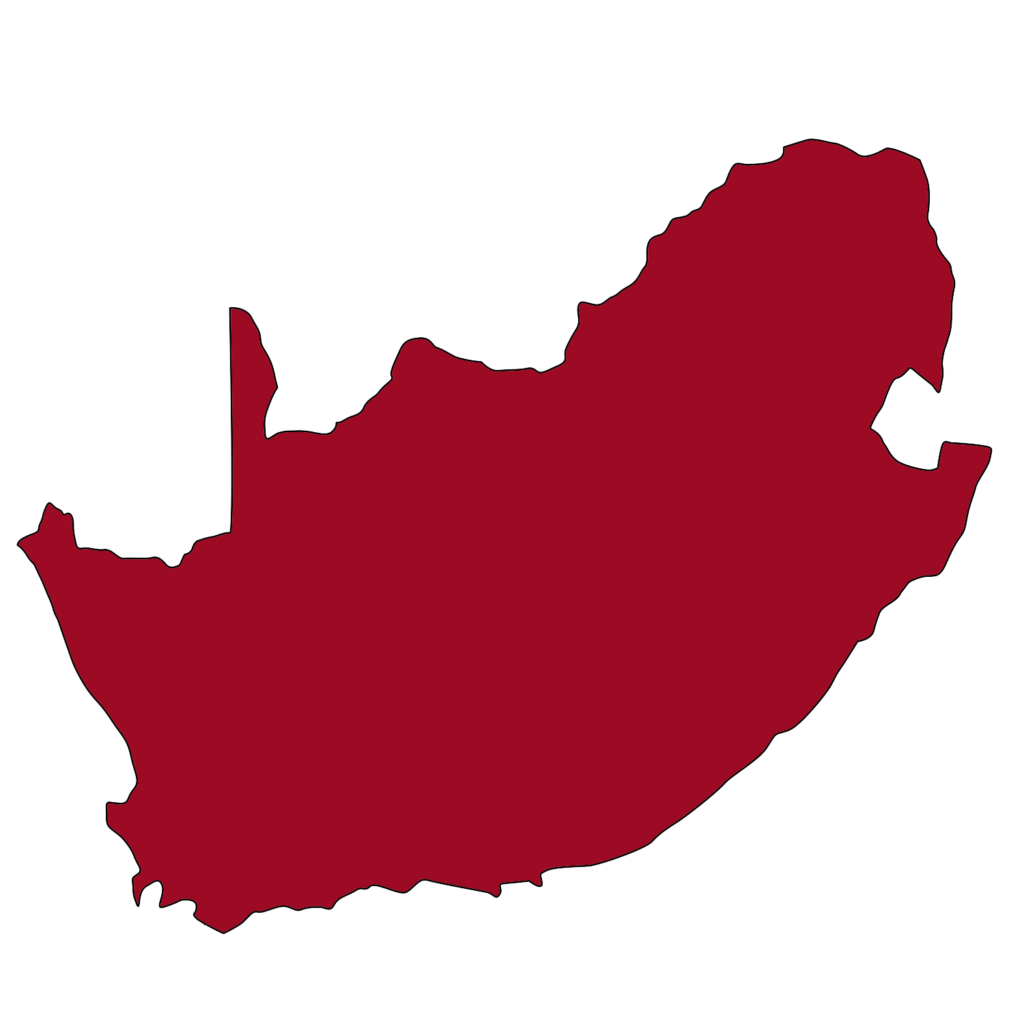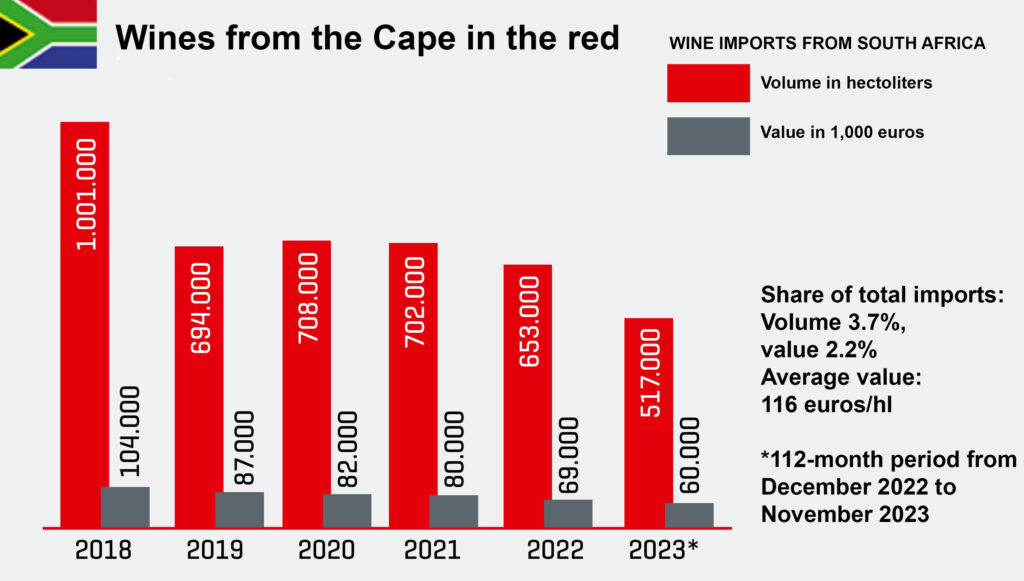
The breathtaking landscape around Cape Town is home to South Africa’s wine-growing regions. The vineyards of around 100,000 hectares are comparable to the vineyards of Germany. They are located in the Cape region in many small valleys, which are protected by mountain ranges. The proximity to the sea moderates the intensity of the sun and the temperatures, and the wines retain their fresh aromas. In addition to its distinct beauty, South Africa’s landscape is extremely diverse, resulting in a variety of different terroirs. While Cape wines were an export hit in the 18th century and in high demand in Europe, these relationships largely broke down in the 20th century. Due to apartheid, which lasted until 1992, trade sanctions were imposed on South African products. After the introduction of a democratic government, viticulture opened up. Winegrowers took advantage of access to fresh, healthy grapes and planted many new vineyards, taking international demand into account. Although wine production in South Africa is not as restricted as in France, for example, where only certain grape varieties are allowed, the laws are strictly enforced. Origin and regulation of the areas under cultivation have been defined in line with European standards. Thus, the responsible Wine & Spirt Borad guarantees the origin of a wine if it is indicated on the label.
South Africa is one of the oldest wine regions in the New World, as wine has been grown there since 1600. Most of the country’s wine production is concentrated in Cape Town, which is also where the very first bottle of South African wine was made!
For more and more tourists, it is also the good wine that attracts them to South Africa. And rightly so, because not only is the wine region one of the most beautiful in the world, but also the wines available in our country remarkably demonstrate that the wine quality deserves an international top ranking.
Most important regions
In the breathtaking landscape around Cape Town (Western Cape)are the wine-growing regions of South Africa- The vineyards of about 100,000 ha are comparable to the vineyards of Germany.
Breede River Valley- Breedkloof, Robertson, Worcester, Swellendam.
Little Karoo — Calitzdorp, Langeberg, Montagu
Coastal Region- Tulbagh, Durbanville, Paarl, Franshoek, Wellington, Swartland (Riebeeck-Malmesbury) Darling, Constantia….
Olifants River — Citrusdal, Lutzville, Vredendal
Western Cape — Overberg, Hemel-en-arde Valley, Elim, Plettenberg Bay
Most important grape varieties (WHITE)
Chenin Blanc, Sauvignon Blanc, Chardonnay, Semillon, Viognier, Colombard-Semillon
Main grape varieties (RED)
Cabernet Sauvignon, Shiraz, Pinotage, Merlot, Cinsault, Pinot Noir, Cabernet Franc

In South Africa, both the harvest volumes and the area under vines fell significantly in 2024. The grape harvest was 7% lower than in the previous year, with a total of around 1.1 million tons of grapes from 88,000 hectares, which is expected to result in around 857 million liters of juice, non-alcoholic concentrates, wine and brandy — the smallest harvest volume in the last 20 years. Despite the cost pressure, the smaller harvest could offset the current wine surplus. The South African wine industry is focusing on value-oriented growth and sustainability, according to Rico Basson, CEO of South Africa Wine. Frost, flooding and unusual rainfall have led to regional variations in crop losses, especially for early white grape varieties such as Chenin Blanc. While Klein Karoo is expecting a slightly larger harvest and Swartland is forecasting normal yields, the losses in Olifants River and Paarl due to flooding and in Stellenbosch due to drought after heavy spring rains are particularly noticeable. South Africa, the seventh largest wine producer in the world, lost around 2 percent of its vineyard area last year, particularly in the Northern Cape (519 hectares). Large growing areas such as Stellenbosch, Robertson, Olifants River, Swartland and Paarl also recorded declines, while Cape South Coast was the only area to report an increase of 10 hectares.

